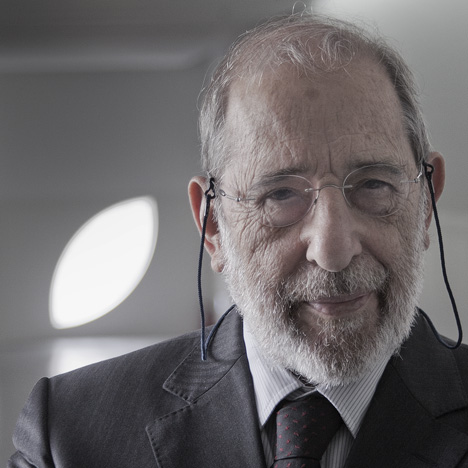
Álvaro Siza: "Emotion is very important" in architecture
Interview: Álvaro Siza, one of the world's most decorated architects, spoke to Dezeen recently in his home city of Porto, Portugal. In this interview he tells us his projects are never finished "because we never have enough time".
Siza is a cult figure on the architecture circuit whose work has been described as "poetic modernism". The jury citation for his 1992 Pritzker Prize states that "Like the early Modernists, his shapes, molded by light, have a deceptive simplicity about them; they are honest."
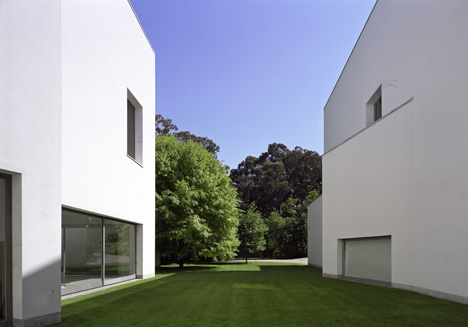
Born in 1933, Siza – whose full name is Álvaro Joaquim de Melo Siza Vieira – has also won the RIBA Gold Medal, the AIA Gold Medal and the Golden Lion for lifetime achievement, among other prizes.
Unlike many high-profile architects, Siza has famously always kept his team small to ensure he has creative control over every project in his office. He doesn't have a website and still favours drawings boards over computer-aided design.
"Even before I have complete knowledge, or good knowledge of every single problem, I begin sketching possible solutions with the little information I have. I feel I need to begin immediately with an idea – although then it can be completely changed."
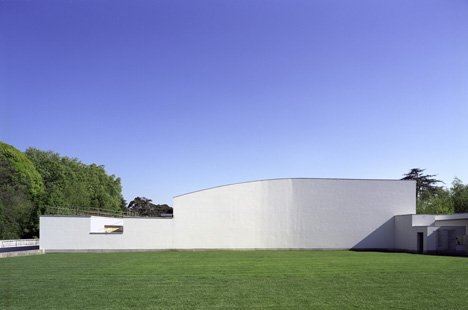
But he also insists that emotion is one of the most important tools in architecture. "You have to feel what you are doing, and not be so rational that you just solve the problems, because emotion is very important. Without it, something is missing," he said.
The architect revealed that he rarely thinks of his projects as finished – his recently completed office building in China was still under construction two weeks after the opening ceremony.
"One of the questions we have often is 'how much time we have for design?' and 'how much time we have for construction?'" he said. "Building a project – it is never finished, that's it, because we never have enough time."
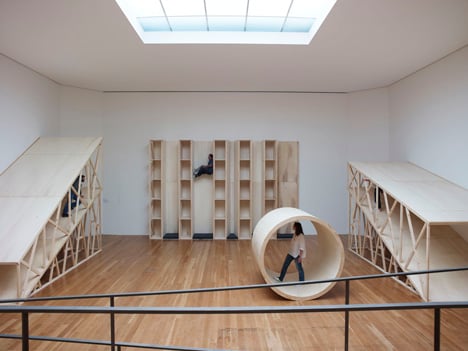
Dezeen was invited to Portugal as part of the 15th anniversary celebrations of the Serralves Museum, one of many projects that Siza has completed in Porto, the city where his studio has been based since 1954.
At the gallery, the 81-year-old discussed the building, his architectural technique, and how the economic crisis has forced him to look overseas for work. He also revealed details of an "amazing" new Bauhaus gallery he is working on for architect Wang Shu's Chinese Art Academy.
Read an edited transcript of the conversation:
Amy Frearson: As we're here at the Serralves Museum you designed, can you begin by telling me about the building?
Álvaro Siza: The building is working, there are many different things like exhibitions. Until now it has been possible to use it in a perfect way, it's flexible enough. Although if I was in charge to do this again today, I'm sure I would make a different thing. Not because I don't like this one but because I am different. I'm another person with experience. So it would be different.
Amy Frearson: How would it be different?
Álvaro Siza: I don't know. When you have a building to do, you come, you have the experience, you see the site, you see the landscape, you speak with the people, you are in a state of mind. So, 25 years later all these things will be different. For instance 20 years ago I did not have to fight with the crisis so if it was today the building would probably not have been built, simply because there would not be the finances to do it.
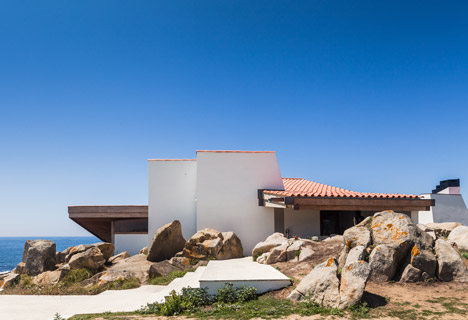
Amy Frearson: Can you tell me about the new project you're working on here?
Álvaro Siza: This is a 19th-century garage that was transformed in the 20s or 30s. The architect that worked on the Serralves Villa – one of the best architects in Porto called Marques da Silva – made some optimisation of the building, very discreet as usual, putting stone around the windows, making small towers, and he said to me: 'So how have you decided to use the archives?’
But it is not enough space. I have to add a new building. It will be a cinema house and central archive. It also includes a small cinema, space for exhibitions, space for temporary exhibitions from his material and also relating to other filmmakers and other people and so on. The upper floor will be for exhibitions, on the ground floor there will be a small shop, and there will offices for the investigators, restoration artists and so on. In the new area there will a cinema for 50 people, then the archive on the ground floor – that simple. There are small buildings, very small storage buildings that we demolished here, including one for chickens.
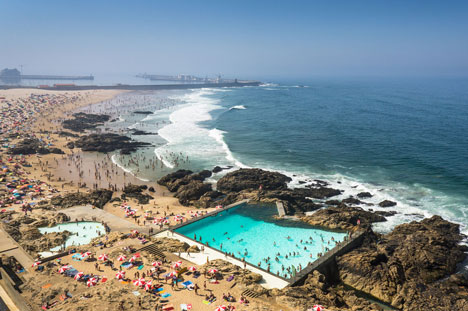
Amy Frearson: How do you see Porto today, and how it has changed since you started your career?
Álvaro Siza: Well there is a contemporary polemic about identity. Because some people are afraid this amount of information breaks identity, our country and so on. I don't think so. Because through the centuries, the influence, some times very strong, modern, happened. When Portugal went to India, to China – I'm speaking of the 16th Century – it was an enormous shock, and they created a new skyline, which is now one of the exemplars of Portuguese identity. The influence of India, first, and China; today we don't feel that identity.
On the other hand there is a fixation on tradition and so on; the culture today is so complex. It's difficult balance, what you receive and use may be difficult but it's a healthy balance. Globalisation in the end is not a new thing. But it requires identity and in that way the difference of identity of a culture is also part of our obligation.
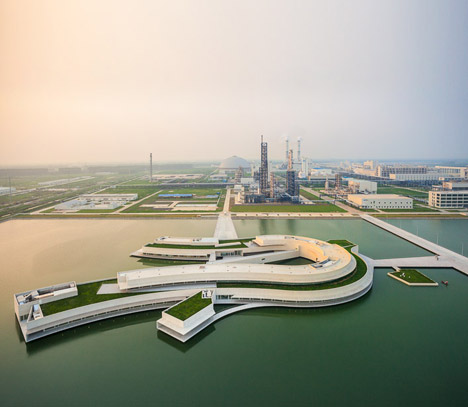
Amy Frearson: I understand you're currently working on a new project in China. Can you tell me about that?
Álvaro Siza: That's right, one amazing project that is a Bauhaus museum in Hangzhou. The other work, in Huai'An, that is finished now.
The museum was an invitation coming from the university of Hangzhou. There is a free space on the campus, and they bought in Berlin a fantastic Bauhaus collection with everything – furniture, drawings, glass, ceramics and so on. So they invited us to make a museum, not only to have exhibitions of the collection, but also to have workshops for the students as part of the university of design. So there will be workshops, meeting rooms, auditoriums, and those things. And the part with the collection, of course.
Amy Frearson: I heard you are collaborating with Chinese architect Wang Shu on the design. Is that true?
Álvaro Siza: Not really in collaboration. He had not yet won the Pritzker when we were invited, then I was reading the paper in Porto one day and I saw that news and thought "is this happening? So before we were often working with Wang Shu but now he's much busier!
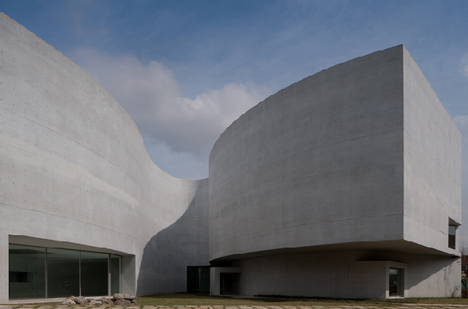
Amy Frearson: When you get a new project, what's the first thing you do? How do you start your design process?
Álvaro Siza: Even before I have complete knowledge, or good knowledge of every single problem, I begin sketching possible solutions with the little information I have. I feel I need to begin immediately with an idea – although then it can be completely changed.
While I'm in this process, I have collaborators taking photos and making a model of the area, some study the problem more carefully and look for information that is good for the problems. Then I go on and someone goes to the computer and begins with the vigorous designs, and I receive all this information and I begin putting out crazy ideas that are not good, but often I feel necessary. I start this way with a lot of projects, and then I get more information, and this doesn't work, blah blah blah.
You have to feel what you are doing, and not be so rational that you just solve the problems, like material and space and so on, because emotion is very important. Without it, something is missing.
One of the questions we have often is "how much time we have for design?" and "how much time we have for construction?" We had the opening ceremony in China and two weeks later we are still working on that building because there are still things to be done. There is design time and construction time. Building a project – it is never finished, that's it, because we never have enough time.